Best Medical Schools in the US to Shape Your Future in Medicine
May 09, 2025

Studying medicine in the United States is one of the most competitive and rewarding paths in higher education. Top medical schools offer world-class faculty, groundbreaking research, and access to advanced clinical experience. The best medical schools in the US are known for producing highly skilled doctors who go on to lead in every area of healthcare.
Choosing the right medical school depends on your goals. Some schools are known for research and innovation. Others focus on community health, primary care, or global medicine. Location, campus culture, and specialty opportunities also play a big role in decision making. A good program should challenge you but also support your growth.
In this guide, we highlight ten of the top-ranked institutions in the country. These schools are consistently praised for academic strength, residency match rates, and funding. They also offer robust networks that follow students throughout their careers. Many programs include partnerships with hospitals, public health systems, and global health centers.
The best medical schools in the US do more than teach. They shape the future of healthcare. From patient care to policy to innovation, their students often become leaders in multiple fields. These programs demand hard work, but they also offer unmatched opportunity.
Whether you want to work in surgery, pediatrics, research, or public health, a top medical school is the best place to begin. Below, we explore ten institutions that stand out for their excellence, impact, and long-standing reputation in American medicine.
Jump to the Top Schools
- Why You Should Study at a Medical School
- Harvard Medical School
- Johns Hopkins School of Medicine
- Stanford University School of Medicine
- University of California San Francisco (UCSF) School of Medicine
- Columbia University Vagelos College of Physicians and Surgeons
- Mayo Clinic Alix School of Medicine
- University of Pennsylvania Perelman School of Medicine
- Washington University in St. Louis School of Medicine
- Yale School of Medicine
- Duke University School of Medicine
- What Sets the Best Medical Schools in the US Apart
Why You Should Study at a Medical School
There is a moment many future doctors carry with them for a lifetime. It could be the quiet fear of seeing a loved one in a hospital bed, or the awe of watching a skilled surgeon bring someone back from the edge. That moment stays with you. It plants a seed. If it grows into the desire to learn, to heal, and to serve others, then medical school might be the right path. But this path is not about prestige or status. It is about choosing to face pain, loss, and uncertainty every day, and doing so with purpose.
Studying at a medical school is not only about mastering science. It is about building character. You learn the details of the human body, but also how to speak to someone in fear. You learn how to diagnose a disease, but also how to stand still in silence when there are no easy answers. The training is long and intense. There are early mornings, long nights, and days that test your limits. Yet in those moments of exhaustion, you discover resilience. In every mistake, you find humility. In every patient, you see a reason to keep going.
Medicine is a career that asks for your full self. You cannot do it halfway. You cannot fake your way through it. The journey from student to physician is one of growth, sacrifice, and transformation. If you want to help people, if you are ready to carry both responsibility and trust, then this is the path for you. A medical school does not just teach medicine. It shapes people who are ready to step forward when others step back.
Harvard Medical School
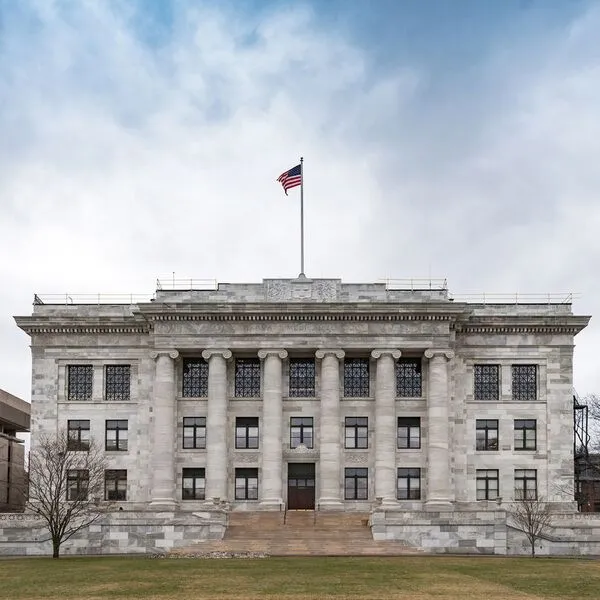
Harvard Medical School, located in Boston, Massachusetts, is one of the most historic and respected medical institutions in the world. Established in 1782, it has shaped generations of doctors, researchers, and global health leaders. As one of the best medical schools in the US, Harvard is known not only for its rich history but also for its ongoing role in driving the future of medicine. The school is affiliated with several world-class hospitals, including Massachusetts General Hospital and Brigham and Women’s Hospital, giving students immediate access to advanced clinical training.
Academically, Harvard offers a rigorous and research-driven curriculum. The MD program uses a blended learning model called Pathways, which emphasizes early patient contact, problem-based learning, and flexible electives. Students also have the option to pursue dual degrees, including MD-PhD, MD-MBA, and MD-MPH programs. Harvard is a leader in areas such as biomedical ethics, precision medicine, and public health innovation. Students are encouraged to participate in research early on, and many present at national conferences or publish in medical journals before graduating.
The school's location in Boston is a major advantage. The city is home to a high concentration of hospitals, research centers, and biotech firms. This environment gives students real-world exposure beyond the classroom. Clinical rotations are integrated into the curriculum and take place at Harvard-affiliated hospitals, where students learn directly from practicing physicians and specialists. Boston also hosts major global health summits and medical conferences, adding to the academic and networking value.
Getting into Harvard Medical School is extremely competitive. Applicants must first complete a four-year undergraduate degree with a strong academic record, particularly in science courses. The Medical College Admission Test (MCAT) is required, and most accepted students score in the top percentiles. Additional application components include letters of recommendation, research experience, clinical exposure, and a compelling personal statement. International students are considered, but they face additional financial and visa requirements.
The cost of attending Harvard Medical School is high. Tuition and fees for one year exceed 70,000 dollars, and total costs including living expenses can reach over 100,000 dollars annually. However, Harvard offers need-based financial aid and scholarship programs that make it possible for many students to attend without taking on excessive debt. The Financial Aid Office works with each admitted student to build a personalized aid package. Some scholarships are awarded automatically, while others require separate applications or proof of need.
Graduates of Harvard Medical School are among the most sought-after in the world. They go on to top residency programs in every medical specialty. Many become leaders in research, healthcare policy, or academic medicine. The network and prestige associated with Harvard open doors across the globe. With its rigorous education, elite faculty, and historic impact on the field, Harvard remains a top choice for those seeking the best medical schools in the US.
Johns Hopkins School of Medicine

Johns Hopkins School of Medicine, located in Baltimore, Maryland, is one of the most respected and research-focused medical schools in the world. Founded in 1893, it quickly became known for changing how medicine was taught. The school pioneered the model of combining scientific research with patient care, a system that many modern institutions still follow. Today, it remains one of the best medical schools in the US, consistently ranked at the top for both research and primary care.
Academically, Johns Hopkins offers a rigorous and highly flexible curriculum. The program is divided into foundational learning, clinical experience, and scholarly research. Students are encouraged to explore interests beyond the standard MD track, including dual degree programs like MD-PhD and MD-MPH. Johns Hopkins is especially strong in fields like neuroscience, surgery, oncology, and global health. The school also offers early clinical exposure, allowing students to engage with patients from the beginning of their training.
The medical school is closely affiliated with the Johns Hopkins Hospital, one of the top-ranked hospitals in the United States. This gives students access to a wide range of clinical environments and expert mentors. The Baltimore location also allows for community-based learning, with outreach programs focused on public health and underserved populations. The mix of elite hospital systems and real-world service helps students build both skill and empathy.
Admission to Johns Hopkins School of Medicine is highly selective. Applicants must complete a four-year undergraduate degree and take the MCAT. Most accepted students have strong academic backgrounds in science, along with research experience and volunteer work. The admissions process looks for candidates who show leadership, resilience, and a clear motivation to serve others through medicine. International students may apply but must meet strict eligibility requirements.
The cost of attendance is similar to other top programs. Annual tuition and fees exceed 65,000 dollars, and total yearly expenses can rise to over 95,000 dollars when housing and supplies are included. However, Johns Hopkins offers a robust financial aid program based on need. About ninety percent of students receive some form of aid. There are also scholarships, grants, and work-study programs available to help manage costs. The Office of Financial Aid works closely with each student to create a manageable plan.
Graduates of Johns Hopkins go on to lead in medicine, science, and public health. Many match into competitive residency programs and take on influential roles in hospitals, universities, and global health organizations. The school’s alumni network is large and supportive, offering mentorship and connections throughout a physician’s career. With its academic strength, research excellence, and social impact, Johns Hopkins stands tall among the best medical schools in the US.
Stanford University School of Medicine
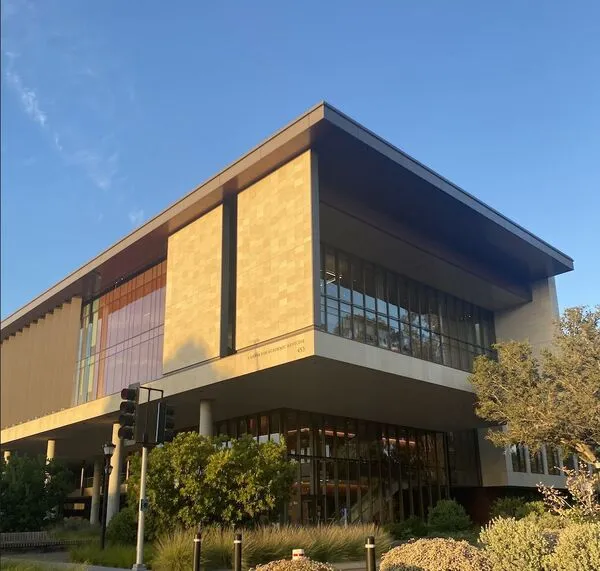
Stanford University School of Medicine is located in the heart of Silicon Valley in Stanford, California. Since its founding in 1908, the school has built a reputation for innovation, academic excellence, and leadership in research. Its unique position within one of the world’s top universities adds depth to its curriculum and expands opportunities for interdisciplinary study. Stanford is regularly ranked among the best medical schools in the US, known for blending medicine with technology and entrepreneurship.
The academic structure at Stanford focuses on flexibility and individual growth. The curriculum is designed around discovery, allowing students to explore personal interests alongside core clinical training. The program includes an extended research year, where students can pursue projects in basic science, clinical studies, or public health. Stanford also offers dual degree programs such as MD-PhD, MD-MBA, and MD-MPH, allowing students to combine medicine with business, science, or policy education.
One of Stanford’s biggest advantages is its location. Being close to major tech companies and research institutions gives students a chance to work on cutting-edge projects in biomedical engineering, AI in healthcare, and digital health. Clinical training takes place at Stanford Health Care, Lucile Packard Children’s Hospital, and other partner facilities. This offers a wide range of patient exposure and specialty rotations from the very first year.
Admission to Stanford School of Medicine is extremely competitive. Applicants must have a strong academic record, high MCAT scores, and significant research or clinical experience. The admissions committee looks for individuals with a clear vision for their future, leadership skills, and a commitment to service. While a science background is important, Stanford also values creativity and diverse life experiences that shape future physicians.
The cost of attending Stanford is high, with tuition and fees reaching over 67,000 dollars per year. Including living expenses and insurance, the total yearly cost can go beyond 100,000 dollars. However, Stanford offers a generous financial aid program based on need. Scholarships, grants, and research assistantships help reduce the financial burden. The school also offers a limited number of merit-based scholarships to exceptional candidates.
Graduates of Stanford School of Medicine often go on to lead in academia, biotechnology, public health, and private practice. The school's emphasis on research and innovation prepares students to be problem solvers and pioneers. With strong clinical training, access to world-class faculty, and a culture that encourages exploration, Stanford remains one of the best medical schools in the US for those who want to push the boundaries of what medicine can achieve.
University of California San Francisco (UCSF) School of Medicine
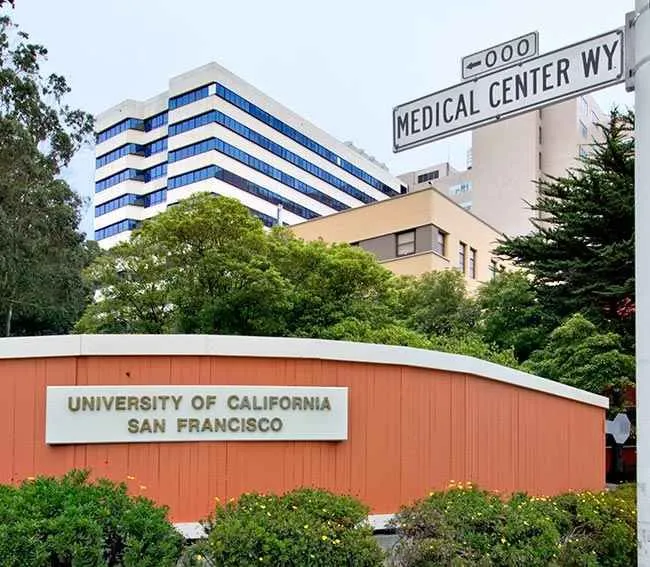
The UCSF School of Medicine is one of the leading medical schools focused on patient care, research, and public health. Located in San Francisco, California, it was established in 1864 and has grown into a top institution known for innovation in clinical medicine and biomedical research. It is part of the University of California system and operates within one of the most advanced health sciences campuses in the country. UCSF is consistently ranked among the best medical schools in the US, especially for primary care and internal medicine.
UCSF’s academic model is centered around public service and community health. Its Bridges Curriculum combines scientific knowledge, clinical training, and population health into a unified experience. Students begin clinical exposure early and work in interprofessional teams to understand the needs of diverse patient populations. The program also allows for research in areas like epidemiology, global health, and healthcare policy, giving students the tools to make an impact beyond the hospital setting.
San Francisco is a major advantage for students at UCSF. The city is home to some of the country’s top hospitals, biotech firms, and public health organizations. Clinical training takes place at UCSF Medical Center, Zuckerberg San Francisco General Hospital, and the San Francisco VA Medical Center. These sites offer experience in trauma care, infectious disease, and underserved communities. The city’s diversity helps students prepare for real-world healthcare challenges across cultures and conditions.
Admission to UCSF School of Medicine is highly competitive. Applicants must complete a four-year undergraduate degree, preferably with strong coursework in biology, chemistry, and social sciences. High MCAT scores are required, along with clinical experience and a demonstrated commitment to service. UCSF values applicants with backgrounds in community work, research, and leadership. The school seeks well-rounded students who will become compassionate, skilled, and socially aware physicians.
The cost of attendance is lower than many private institutions. In-state tuition is around 42,000 dollars per year, while out-of-state students pay more. Including housing and supplies, total yearly costs reach about 70,000 dollars. UCSF offers financial aid based on need, along with scholarships for high-achieving students. Many students also qualify for loan forgiveness programs by entering primary care or working in underserved areas after graduation.
UCSF School of Medicine produces graduates who lead in community medicine, public health, academic research, and hospital leadership. Its strong network across California and the world provides students with professional support and career direction. With its commitment to diversity, social impact, and scientific excellence, UCSF holds a special place among the best medical schools in the US, particularly for those who want to combine top-tier training with meaningful public service.
Columbia University Vagelos College of Physicians and Surgeons

Columbia University Vagelos College of Physicians and Surgeons is located in New York City and is one of the oldest and most prestigious medical schools in the United States. Founded in 1767, it was the first American medical school to award the Doctor of Medicine degree. Today, it remains a global leader in medical education, research, and clinical excellence. As part of Columbia University and the Ivy League, the school holds a strong position among the best medical schools in the US.
The curriculum at Columbia is known for its academic depth and flexibility. The program begins with a focus on foundational science and clinical skills, followed by immersive clinical rotations across New York’s major hospital systems. Students can choose from various scholarly tracks, including global health, biomedical research, and medical education. The school also offers dual degree options such as MD-PhD and MD-MPH, allowing students to tailor their education to their long-term goals.
New York City provides an unmatched clinical environment. Columbia is affiliated with NewYork-Presbyterian Hospital, one of the top hospitals in the country, and students rotate through multiple urban and specialty hospitals. This allows them to gain experience with complex cases and diverse patient populations. The city’s scale and energy also open doors to public health work, community outreach, and interdisciplinary collaboration with nearby institutions.
Admission to Columbia University Vagelos College is extremely competitive. Applicants need strong academic backgrounds, high MCAT scores, and a clear record of research, service, and leadership. The admissions team looks for individuals who not only excel in science but also show empathy, resilience, and dedication to improving patient care. A passion for learning and a history of meaningful experiences in healthcare or research are key factors in the selection process.
The cost of attendance at Columbia is among the highest in the country, with tuition and fees around 70,000 dollars per year. When housing and living expenses are included, total yearly costs can exceed 100,000 dollars. However, Columbia is also known for its strong financial aid program. Thanks to a major donation, the school now offers need-based scholarships that allow many students to graduate debt-free. The financial aid office works closely with students to ensure that cost does not prevent them from attending.
Graduates of Columbia go on to lead in academic medicine, clinical innovation, and global health. The school’s reputation, combined with its location and hospital partnerships, creates a powerful platform for launching successful medical careers. With a deep commitment to education, research, and service, Columbia University Vagelos College of Physicians and Surgeons continues to set the standard among the best medical schools in the US.
Mayo Clinic Alix School of Medicine
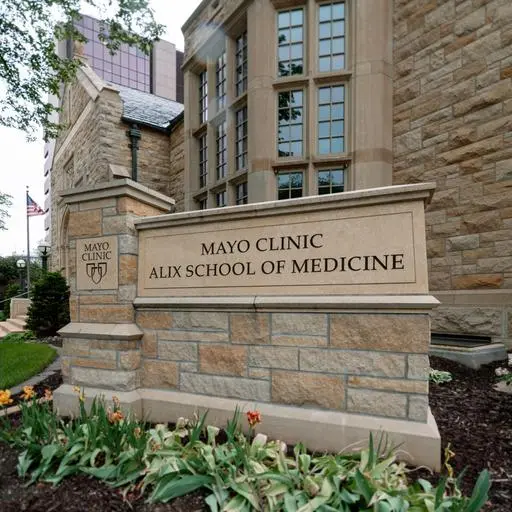
Mayo Clinic Alix School of Medicine is part of the world-renowned Mayo Clinic system, based in Rochester, Minnesota. It was founded in 1972 and has quickly risen to national recognition for its focus on patient-centered care and clinical excellence. Though younger than many top-tier medical schools, it has earned a place among the best medical schools in the US due to its close integration with the Mayo Clinic's hospital and research facilities.
The academic experience at Mayo is defined by its small class sizes and strong faculty-to-student ratio. The curriculum follows a model that blends scientific training with early clinical exposure. From the first year, students work with real patients and learn from physicians across multiple specialties. The school emphasizes a team-based approach and places strong focus on communication, ethics, and holistic patient care. Students also have the option to pursue research and dual-degree programs, including MD-PhD and MD-MBA.
One unique advantage of studying at Mayo is the direct connection to one of the top hospitals in the world. Students complete clinical training not only in Rochester but also at Mayo’s campuses in Arizona and Florida. This gives them a wide range of patient experiences in different healthcare settings. The academic medical center environment fosters close collaboration between medical students, researchers, and world-class physicians. The school’s personalized learning approach makes it particularly attractive for students who want intensive, hands-on training.
Getting into Mayo Clinic Alix School of Medicine is very competitive. Applicants must have strong academic records, high MCAT scores, and significant experience in clinical or research settings. The admissions team seeks students who are not only academically talented but also committed to serving others and working within teams. Interviews follow a multiple mini-interview format, which helps assess communication skills and ethical reasoning. Mayo also values resilience and a strong sense of purpose in medicine.
The annual tuition for Mayo is just under 65,000 dollars, which is in line with other private medical schools. However, thanks to a major philanthropic donation, Mayo now offers substantial financial aid packages. Many students receive scholarships that reduce or even eliminate tuition costs. The school’s goal is to admit students based on potential, not financial background. This makes Mayo a more accessible option among the top medical schools, especially for those seeking low-debt options.
Graduates of Mayo Clinic Alix School of Medicine are known for their strong clinical skills and compassionate approach to care. They match into competitive residency programs and often stay connected to the Mayo network throughout their careers. With its emphasis on collaboration, innovation, and patient-first values, Mayo continues to rise in national rankings and remains a top contender among the best medical schools in the US.
University of Pennsylvania Perelman School of Medicine
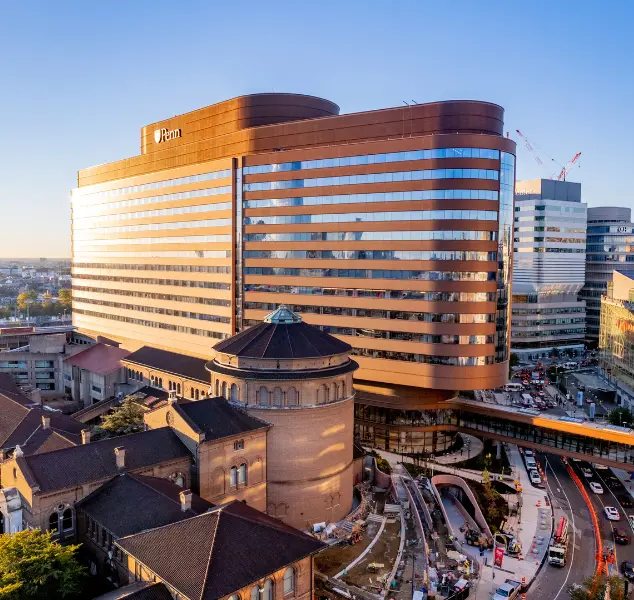
The University of Pennsylvania Perelman School of Medicine, often called Penn Med, is one of the oldest and most prestigious medical schools in the country. Founded in 1765, it was the first medical school in the United States and has maintained a legacy of excellence ever since. Located in Philadelphia, Pennsylvania, it is part of the Ivy League and consistently ranked among the best medical schools in the US for both research and clinical training.
Academically, Penn Med is known for its innovative and interdisciplinary approach. The curriculum blends foundational science with early clinical experiences and encourages students to think across fields. The program includes small group learning, simulation labs, and long-term patient relationships through the Doctoring course. Penn also offers several dual degree options, including MD-PhD, MD-MBA, and MD-MPH. These programs allow students to combine medicine with science, business, or policy, depending on their career goals.
The school benefits from its location within the University of Pennsylvania Health System. Clinical rotations take place at top-tier hospitals like the Hospital of the University of Pennsylvania, Pennsylvania Hospital, and the Children's Hospital of Philadelphia. These facilities provide exposure to a wide range of specialties and patient populations. Students also benefit from Penn's strong emphasis on community health and public service, including programs that allow them to serve in urban and underserved communities.
Admission to Penn Med is highly selective. Applicants must have a strong academic record, high MCAT scores, and a demonstrated interest in healthcare through research, volunteering, or work experience. The school looks for students who combine intellectual ability with compassion and leadership potential. Personal statements and interviews are a major part of the admissions process and help the committee understand each candidate’s motivation and readiness for medical training.
The cost of attending Perelman School of Medicine is approximately 68,000 dollars per year in tuition and fees. Including housing and other expenses, the total cost reaches over 100,000 dollars annually. However, Penn offers generous financial aid and scholarships based on need and merit. The school also supports students with research funding, travel grants, and programs that help reduce debt through public service and academic career paths.
Graduates of Penn Med match into some of the most competitive residency programs in the country. Many go on to become leaders in academic medicine, clinical practice, and health policy. The school’s extensive alumni network and strong academic reputation create lasting career opportunities. With its history, innovation, and dedication to training future leaders, the University of Pennsylvania Perelman School of Medicine firmly stands among the best medical schools in the US.
Washington University in St. Louis School of Medicine
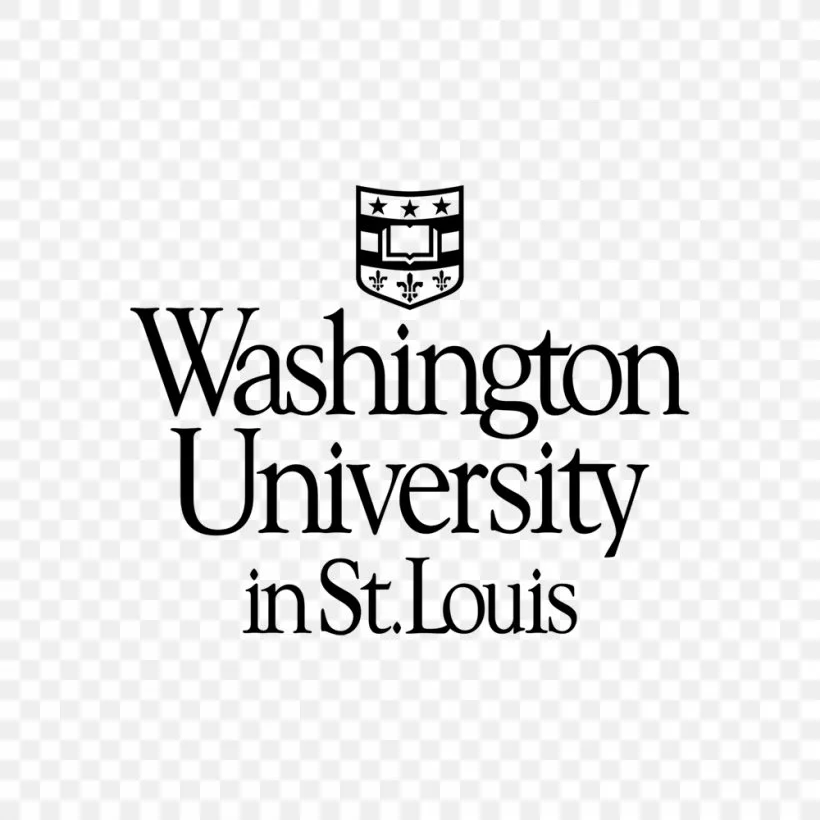
Washington University in St. Louis School of Medicine is one of the leading research-focused medical schools in the United States. Established in 1891, the school has built a reputation for academic excellence, scientific innovation, and a strong commitment to training the next generation of physician-scientists. Located in St. Louis, Missouri, it is consistently ranked among the best medical schools in the US, especially in terms of funding, research output, and academic performance.
The school offers a highly customizable curriculum that allows students to tailor their education to match their career goals. The Gateway Curriculum combines foundational science with early clinical experience and continuous professional development. Students engage in active learning through small groups, clinical immersion, and research integration. Dual degree opportunities such as MD-PhD and MD-MPH are also available for those who want to combine medicine with research or public health.
Clinical training takes place at Barnes-Jewish Hospital and St. Louis Children's Hospital, both of which are part of the highly ranked BJC HealthCare system. These facilities provide exposure to a wide variety of medical conditions, patient demographics, and advanced medical technologies. The school’s location in the Central West End of St. Louis also allows students to participate in community-based projects that address local health disparities and public health challenges.
Admission to Washington University School of Medicine is very competitive. Applicants must have an outstanding academic background, top MCAT scores, and strong experience in research or healthcare. The school values applicants who are curious, self-directed, and motivated by service. In addition to academic metrics, personal qualities such as teamwork, leadership, and compassion play a major role in the selection process. The admissions committee looks for students who are prepared to thrive in a rigorous and research-intensive environment.
Tuition and fees at Washington University are approximately 68,000 dollars per year. When living costs and other expenses are included, the total annual cost approaches 95,000 dollars. However, the school is known for its generous financial aid. A major initiative launched in recent years offers full or partial scholarships to many students, significantly reducing or eliminating tuition. The school’s commitment to making medical education affordable has placed it among the more accessible top-tier programs.
Graduates of Washington University in St. Louis School of Medicine go on to match at top residency programs and often pursue careers in academic medicine, clinical leadership, and scientific research. With its strong foundation in innovation, personalized training, and global impact, the school continues to hold a leading position among the best medical schools in the US for students who want to shape the future of healthcare.
Yale School of Medicine
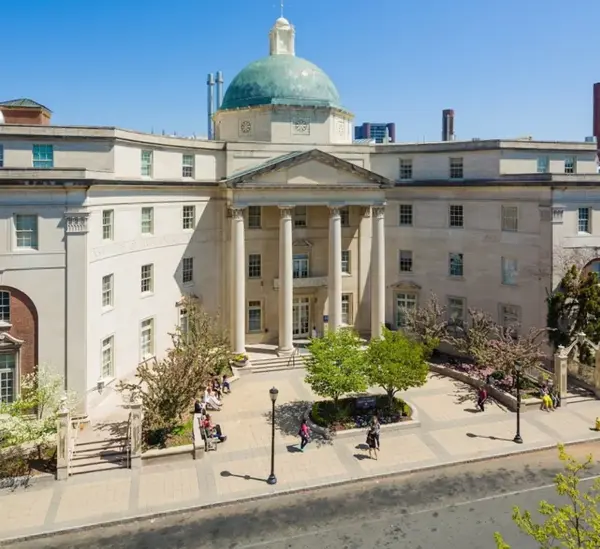
Yale School of Medicine, founded in 1810, is one of the most prestigious and research-driven medical schools in the world. Located in New Haven, Connecticut, it is part of Yale University, a member of the Ivy League. The school has a long tradition of combining academic freedom with clinical excellence, and it is regularly ranked among the best medical schools in the US. Yale is known for its innovative curriculum, top faculty, and commitment to producing not only skilled physicians but also thinkers and leaders in healthcare.
What makes Yale unique is its student-centered learning environment. The Yale System of Medical Education allows students greater flexibility in their learning paths. There are no letter grades or class rankings during the preclinical years, and exams are often self-directed. This approach encourages collaboration over competition and helps students focus on curiosity and deeper understanding. Students are required to complete a thesis based on original research, which prepares them for careers in academic medicine and science.
Clinical training at Yale takes place at Yale New Haven Hospital and affiliated institutions throughout the region. These hospitals provide a rich environment for exposure to a wide variety of medical conditions and patient populations. From the start, students are involved in patient care and receive close mentorship from faculty physicians. Yale also offers global health programs, community service opportunities, and access to major public health initiatives, giving students multiple ways to apply their knowledge beyond the classroom.
Admission to Yale School of Medicine is highly selective. Applicants must demonstrate academic excellence, a strong MCAT score, and meaningful experience in clinical care, research, or public service. The admissions committee looks for students who are self-motivated, intellectually curious, and committed to making a difference in medicine. Personal statements and interviews play a major role in assessing each applicant's goals, values, and readiness for Yale’s rigorous program.
The cost of attendance at Yale is similar to other private medical schools. Tuition and fees total around 68,000 dollars per year, with additional expenses bringing the yearly cost to over 95,000 dollars. However, Yale is deeply committed to financial accessibility. More than eighty percent of students receive some form of financial aid. The school offers need-based scholarships and low-interest loans, and students are guided through personalized financial planning to reduce debt and manage expenses.
Graduates of Yale School of Medicine go on to become leaders in every area of medicine. Many pursue academic careers, research, health policy, or global health. The school’s powerful alumni network and strong clinical training help students match into competitive residency programs across the country. With its emphasis on independence, innovation, and intellectual growth, Yale continues to rank among the best medical schools in the US, especially for students who value flexibility and academic depth.
Duke University School of Medicine
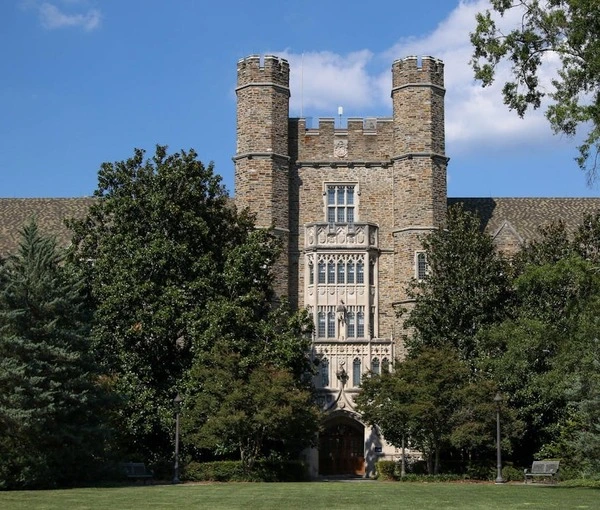
Duke University School of Medicine, located in Durham, North Carolina, is one of the top medical schools in the country. Founded in 1930, it quickly gained a reputation for innovation in both research and education. It is part of Duke University, a private institution consistently ranked among the best in the United States. The school is especially known for its accelerated curriculum and groundbreaking medical discoveries. Over the years, it has remained a leading force among the best medical schools in the US, attracting students who want both clinical excellence and academic depth.
One of the most distinctive features of Duke’s program is its unique curriculum structure. Students complete the basic sciences in one year, allowing them to begin clinical rotations in their second year, a full year earlier than most schools. This early exposure to patient care provides students with more time to explore specialties and pursue research in their third and fourth years. The curriculum also encourages independent learning, leadership development, and scholarly engagement through a required research project.
Duke Health is a world-class clinical and research network that includes Duke University Hospital, Duke Regional Hospital, and Duke Primary Care. These facilities serve as training grounds for medical students and offer exposure to diverse patient populations. The strong partnership between the medical school and the hospital system ensures that students receive practical, hands-on training from experienced clinicians in state-of-the-art environments. The school also offers global health experiences and community health projects that prepare students for real-world challenges.
Getting accepted to Duke University School of Medicine is highly competitive. Successful applicants usually have strong academic records, top MCAT scores, and significant clinical or research experience. The admissions committee values leadership, service, and a passion for healthcare innovation. Duke uses a holistic admissions process that considers more than just numbers. Personal qualities like resilience, communication skills, and a desire to improve the healthcare system also play a role.
Tuition and fees at Duke total around 67,000 dollars per year. Including living expenses and insurance, the total annual cost approaches 95,000 dollars. However, Duke offers substantial financial aid through scholarships, grants, and low-interest loans. Nearly ninety percent of students receive some form of aid. The school is committed to ensuring that cost is not a barrier for qualified applicants. Merit scholarships are also awarded based on academic excellence and leadership potential.
Graduates of Duke University School of Medicine consistently match into top residency programs across the country. Many pursue careers in academic medicine, research, health policy, and global health leadership. The school’s strong reputation, combined with its clinical excellence and innovative curriculum, makes it an ideal choice for students who want to become not only skilled physicians but also changemakers in healthcare. Duke remains one of the best medical schools in the US for future doctors who seek impact, opportunity, and accelerated training.
What Sets the Best Medical Schools in the US Apart
The journey to becoming a doctor begins long before entering a hospital. It starts with choosing the right place to learn, grow, and discover who you want to be in medicine. The best medical schools in the US offer more than just strong academics. They create spaces where knowledge meets purpose and where students are trained not just to treat patients, but to lead change in healthcare.
From Harvard to Duke, these institutions provide access to world-class faculty, clinical rotations in top hospitals, and advanced research opportunities. They shape students into physicians who not only understand science but also see the human story behind every diagnosis. Whether the goal is to work in surgery, family medicine, research, or global health, each school offers unique pathways that support diverse ambitions and talents.
Choosing a medical school is not only about prestige. It is about finding the right environment for your values and learning style. Some programs emphasize early clinical exposure. Others focus on public health, community service, or interdisciplinary study. What all the best medical schools in the US share is a commitment to excellence, innovation, and producing graduates who are ready to meet the complex demands of modern medicine.
If you dream of becoming a doctor, the right medical school can open doors to a lifetime of impact. These ten schools represent the highest standards of education, mentorship, and clinical training. By studying at one of them, you are not just learning medicine. You are becoming part of a legacy that shapes the future of health across the country and the world.
